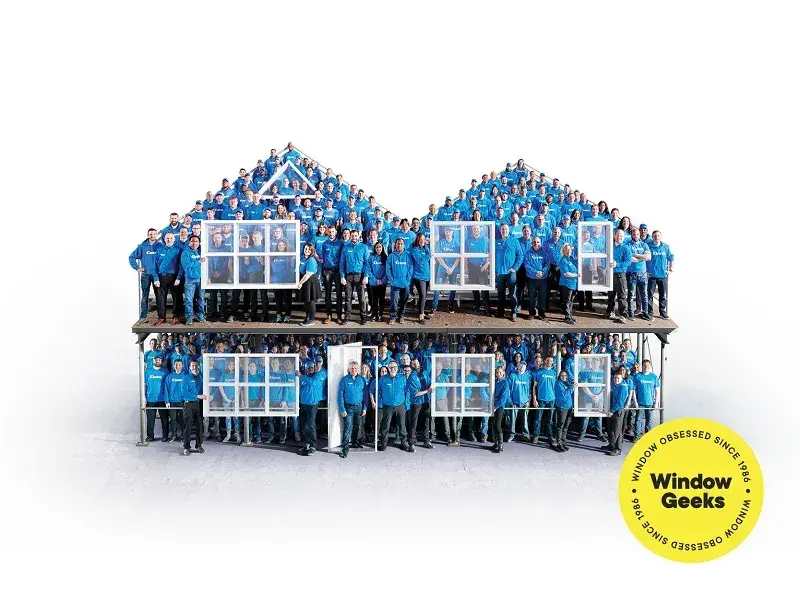Categories
Trending
Comfort
When To Repair New Windows
Energy Savings Rebates
The Benefits of Triple Pane Sliding Windows & Doors
Centra Cares In The News
2024: Another Great Year for Centra Cares
Recommended
Master Class
Air & Water Tightness White PaperMaster Class
What Makes Thermal Performance Challenging in North America?Window Safety & the Building Code
It’s another edition of the Master Class, and this time, your certified Window Geeks are diving into window safety – an important topic, and something that we should all keep in mind when designing, manufacturing, or ordering windows.
So, what regulations will apply to your project’s windows? Do you need tempered or laminated glass, and if so… where and when? Read on to find out!
What does the Building Code say about window safety?
There are several areas of the Building Code that reference the need for safety glazing, with section 9.8 being one of them. The main areas of concern are:
- Tub and shower enclosures or surrounds
- Doors and windows that may appear to be doors
While guards technically require safety glazing, windows do not need to meet the full requirements of guards. They do, however, have to meet the loads specified for guards. This is an important distinction in why we have mullions at guard height, and below that we can apply infill guard loading which may not necessitate tempered glass.
How is window safety enforced?
On single family part 9 homes, these items would be enforced by the building inspector. On part 9 townhome projects and Part 3 projects, these items are dictated and approved by the consultants and engineers that oversee the project and the window design.
So why is safety glazing required in these areas? The short answer is to reduce the potential risk for injury. In all of these scenarios, the glass needed may be different. How to choose between tempered and laminated glass and which works best in each situation requires an understanding of the different characteristics of these glazing types.
Window safety recommendations
Whenever safety glass is specified, it’s always best to understand the intent. This can dictate which glazing type provides the appropriate safety in the most cost-effective way for the customer. Ultimately, it becomes a question for the consultants, but as Window Geeks, it’s our job to help point them in the right direction.
What safety glass options are there?
We’ve looked at glass types before, but let’s get more in-depth…
Tempered glass is up to 4x stronger than “regular” annealed glass. This is achieved through either heat or chemical treatment. In the heating treatment, the glass is heated in an oven to a temperature well above 1000 degrees Fahrenheit, where it turns to its “liquid” state. It is then rapidly cooled with high-pressure air blasts. This process allows the outside of the glass to harden quickly while the inside remains in a liquid state for a longer duration. The outcome of this process forces the outside of the glass into compression while the interior is in tension. This juxtaposition of the two states means that when the glass is hit with enough force to break, it crumbles into granular pieces as opposed to more dangerous shards.
Tempered glass can also be formed through a chemical process. Tempered glass is a great option in situations where strength, thermal resistance, or added safety are required. Tempered glass cannot be altered once made, so it’s important that sizing and modifications are all done prior to the tempering process, as any alteration afterwards will compromise the integrity of the glass. The most common places we see tempered glass is in doorways and car side windows. It’s important to note that tempered glass is worse than annealed glass for security as anyone with a sharp object can easily shatter the entire pane. Consider how you can break your car side window with a glass breaker such as the base of the head of your car seat to get out in an emergency.
Laminated glass is achieved through “gluing” two or more pieces of annealed and/or tempered glass together using a thin polymer interlayer, typically Polyvinyl Butyral (PVB), which adheres to both layers of glass. The result of this process is a shatterproof glass that will remain in the frame upon breakage. Laminated glass can provide excellent protection against intrusion because even if the glass is broken, the window stays intact courtesy of the interlayer.
Laminated glass can be used as bulletproof glass and is an excellent choice for added security in buildings where vandalism or theft are a higher risk. In addition, laminated glass can provide extra protection in disaster-prone areas, such as places where extreme weather can be an issue. It can also act as a sound barrier due to its insulating properties, so if your project is in a particularly busy area, you may want to consider this type of glass.
On that note, be sure to keep an eye out for our next installment, where we’ll be covering the basics of window acoustics in anticipation of our next free white paper!



